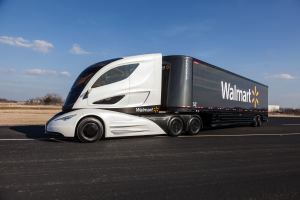In a society that’s striving to leave a smaller carbon footprint, going green has never been more popular. Many are striving to use less energy or choose more efficient alternatives in their day-to-day lives. They use recycled products. They shop with reusable bags. They ride bikes or use public transportation, or they drive electric cars.
And businesses are trying to be more cautious of their carbon emissions, as well.
Though in some cases, this may be due to increased government regulations, a lot of businesses are simply trying to be more responsible. Regardless of motivations, the market is changing the way it handles greenhouse gases and carbon emissions.
For the logistics and transportation industries, this is pretty significant.
Stricter Standards
Recently, President Obama and the EPA have been pushing for higher efficiency standards for semi-trucks. Specifically, the EPA and Department of Transportation have proposed cutting greenhouse-gas emissions for medium and heavy trucks by 10-20 percent by 2018.
To do so, trucks would have to increase their fuel efficiency to upwards of 10 or more mpg. While this would come with a heavy price tag upfront for research, development, and general upgrades, the money saved on gas costs alone could possibly pay for it very quickly. An increase of about 4 MPG could save just one driver approximately $25,000 in 120,000 miles.
The question is, what does a more efficient semi-truck look like?
The Truck of the Future
The average semi-truck gets between 5.5 – 6.5 MPG depending on load size, road conditions, etc. While that might not be very impressive on paper, when you factor in the weight of the truck and cargo, it’s not that bad compared to the efficiency of some pickup trucks.
Still, that’s a ways away from the proposed 10 MPG or so that the EPA is reaching for in the next few years. How do we get there? That’s what a few different companies are trying to figure out.
While car companies have found success in moving to electric engines, the solution isn’t as simple for semis that require considerable more power (not to mention the premium price that often comes with these more efficient vehicles). Utilizing better aerodynamics, hybrid engineering, and in some cases, different building materials, manufacturers are getting creative in their search for a more efficient truck.
Cummins and Peterbilt are finding some success with their hybrid “SuperTruck”. Their SuperTruck has recently reached a new benchmark of 10.7 MPG.
Daimler also just recently unveiled a truck that averages 12.2 MPG, though due to certain federal regulations, it can’t currently be put into production.
 Wal-Mart, who plays a rather large role in the trucking industry, has been working with Peterbilt to create a radically different truck concept. They revealed it last year. It’s name: WAVE.
Wal-Mart, who plays a rather large role in the trucking industry, has been working with Peterbilt to create a radically different truck concept. They revealed it last year. It’s name: WAVE.
With it’s radically different shape and engineering, and largely carbon-fiber build, this truck is built from the ground up with efficiency in mind. While it’s questionable if the WAVE truck will be seen on the roads anytime soon, it does show what’s possible for the future of trucking.
Making a Better Tomorrow
With the heavy external pressure to cut carbon emissions, the trucking industry is bound to change. Though the demands are high, progress is being made towards a more efficient system. That means not only lower fuel costs, but also a healthier world.
And that’s something worth working towards.








 Joel Rice
Joel Rice